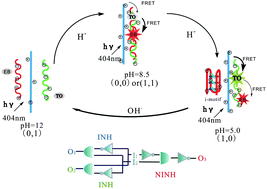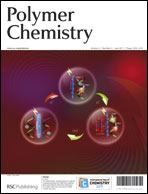In this paper, we described our strategy for the design, construction, and characterization of a novel supramolecular optical-logic system based on cationic conjugated polymer/DNA/intercalating dyes assembly. Multiple logic gates operating in parallel were simulated by taking advantage of the pH-driven conformational conversion of DNA i-motif structure and the two-step fluorescence resonance energy transfer (FRET) process in this assembly. This logic system does not require any chemical modification or oligonucleotide labeling, which offers the advantages of simplicity and cost efficiency; and it can be switched back and forth by addition of H+ and OH−, which makes the logic gates operate easily and feasible to realize system reset. The strategy also gives rise to a new method for label-free detection of conformational conversion of DNA i-motif structure by working in a simple “mix-and-detect” manner, which provides some inspiration for the investigation of other biomolecular conformational conversions upon environmental changes or binding to their targets.

You have access to this article
 Please wait while we load your content...
Something went wrong. Try again?
Please wait while we load your content...
Something went wrong. Try again?


 Please wait while we load your content...
Please wait while we load your content...